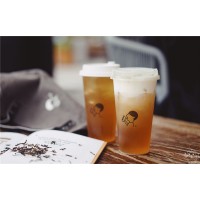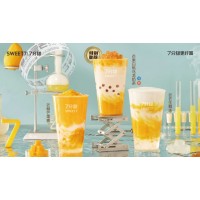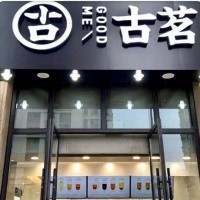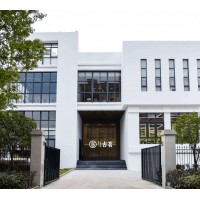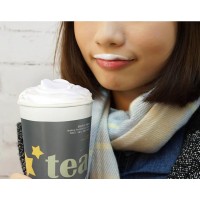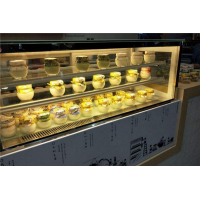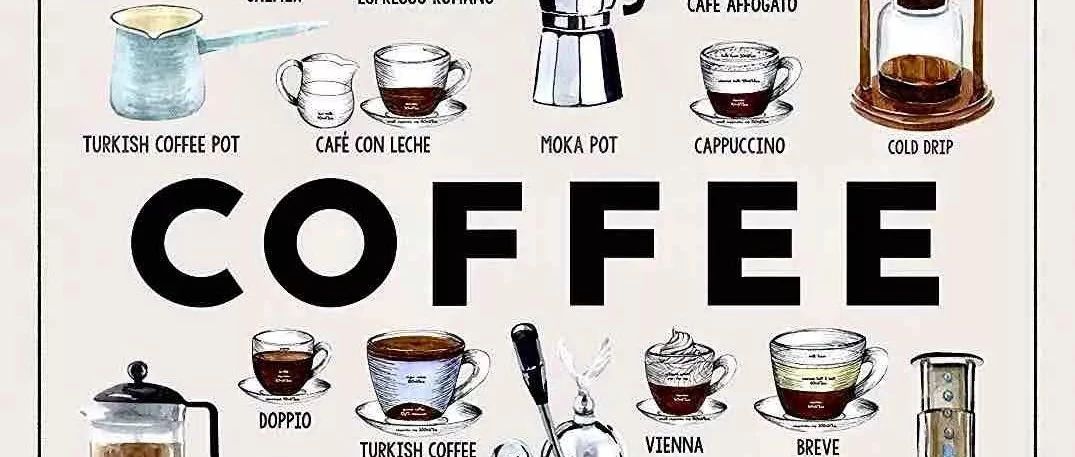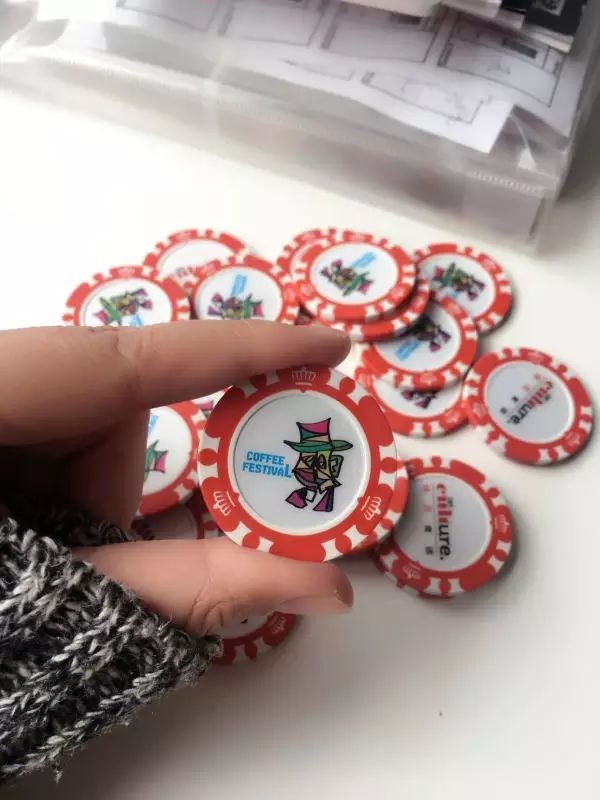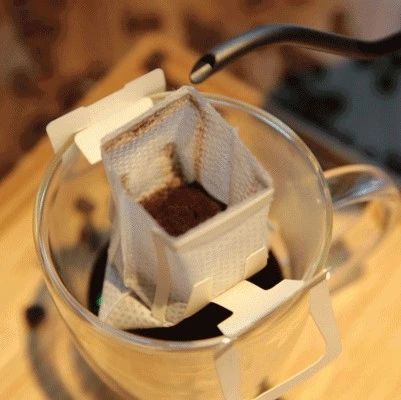2016年世界冲煮大赛规则调整总结2016年都柏林赛事起生效只作内部使用,不作为世界冲煮赛的替代规则,完整规则请查询http://www.worldbrewerscup.org/rules/新规则8.0 比赛小结A. 在每个比赛阶段,参赛选手将由三位评审品评,另外会有一名主审在位,评估选手呈送的饮品。主审会评估呈送饮品的一致性和总体的流程。这些项目都会在总分中有所体现。19.1 冲煮比赛的评审资格认定E. WCE赛事组织方会指派一位主审(根据其评审经验和专业性)来衡量口感的一致性和选手整体的工作流程,并且在整个比赛过程中监督其他评委的工作。主审会品尝选手呈送的饮品。一致性和工作流程分数会在选手的自选冲煮展演的部分进行打分。主审也会就选手的风味描述和冲煮方式作记录,以便参阅,但这部分主审不作打分。原因:我们已经发现,在这个比赛中,我们需要鼓励选手提高他们的技术层面,比方说,冲煮技巧,一致性和专业的工作流程。主审是最适合来评估这些技能的。新规则9.1 指定冲煮C. 在指定冲煮部分,选手将使用冲煮比赛提供的同一批未研磨咖啡豆,使用同样的磨豆机,同样的水,同样标准的盛放器皿。其中,未研磨咖啡豆将会在选手练习时间即将开始前才进行发放。9.5 冲煮用水A. 选手必须使用大赛提供的指定冲煮部分使用的冲煮用水,在自选冲煮比赛阶段,选手可以选择使用他们自带的冲煮用水。11.3 磨豆机只有在自选冲煮比赛阶段,可以允许选手在比赛之前磨咖啡豆。在指定冲煮比赛阶段,必须在比赛时间内,使用比赛场地赞助商指定磨豆机研磨咖啡豆。13.2.3 比赛时间(指定冲煮)选手必须在比赛时间内,使用比赛台上提供的磨豆机和冲煮用水,完成饮品的制作。原因:使用指定的磨豆机和指定冲煮用水的规则,使得评审和选手在这一轮比赛中,可以专注在咖啡师技术的专业性上。指定冲煮比赛部分,所有选手都只使用相同的,最基本的工具。新规则11.2 水TDS(总可溶性固态物质):85mg/L(可接受范围50-125 mg/L)钙/水质硬度:3格令或51mg/L(可接受范围1-5格令或17-85 mg/L)原因:为了选手使用到有品质的冲煮用水,我们已经将赞助水进行了软化。新规则11.6 选手的设备和用品以下情况不被允许:
- 评审桌不可使用例如桌布,鲜花及配件等物品装饰除了咖啡以外,不能给评审任何嗅闻感官体验或食物给评审提供杯测勺、水和餐巾纸(这些是由WCE赛事提供的)原因:通过明确这一点,选手可以更专注于比赛的冲煮和展演部分。修改12.1 选手说明会如果参赛选手没有提前告知赛事组织方并且未能参加选手说明会,主审将会取消选手的参赛资格。原因:澄清处罚条款修改12.2 指定冲煮比赛使用咖啡和练习时间12.2.1 大赛提供的指定冲煮比赛咖啡豆将会在每一位选手的练习时间即将开始之前才发放。每位选手将会收到350g练习豆+比赛豆。原因:澄清流程和使用方法。修改13.3.6 自选冲煮比赛的附加信息除了当场冲煮呈送的咖啡,选手不允许向评审呈送或展示其他食物,饮品或嗅闻感官体验的材料让评委食用、饮用、品尝或嗅闻。如有提供,评审将不会对其进行评估,并且在客户服务项内得零分。新规则14.0 决赛轮14.1 总结第一轮指定冲煮比赛的分数将会带入决赛轮17.3 决赛轮打分E. 成功晋级决赛的选手总分由第一轮指定冲煮比赛部分加上决赛轮自选冲煮比赛分数组成。总分得到最高分的选手是冠军。原因:指定冲煮比赛分数带入决赛总分,是这个比赛更注重冲煮部分的衡量。新规则17.2 第一轮打分17.2.1 指定冲煮评分总分是由打分表上的七项加总而来(酸质、醇厚度和平衡感分数项乘以二计算)17.2.2 自选冲煮评分整体表现分由两个相关项目加总,风味描述项与客户服务项会乘以两倍计算。选手的自选冲煮总分,由三位感官评审的自选冲煮评分表加总,并除以3. 选手自选冲煮得分乘以1.4,加上主审评分,得出之和除以1.6(参看自选冲煮主审评分表)。自选冲煮总评分最高为100分。21.4 感官评分组成部分
注:中文为依据英文翻译而来,如有文字争议,请以官方网站发布的英文条款为准。翻译者:顾沁如
英文原文2016 Summary of changes to rules for World Brewers CupTo take effect in Dublin WBrC 2016For internal use only not to be used in replacement of the WBrC Rules, Please refer to http://www.worldbrewerscup.org/rules/ for complete Rules document.New Rule8.0. COMPETITION SUMMARYA. During each competition Service, competitors will be evaluated by three (3) sensory judges. Additionally, a head judge will be present, and will taste the cups served. The head judge will evaluate uniformity of cups served, and overall workflow. These items will count towards the final score.19.1 WHO IS CERTIFIED TO JUDGE THE BREWERS CUPE. One head judge will be designated by the WCE event organizer (based on judging and professional experience) to evaluate sensory uniformity and overall workflow, and to oversee deliberation of judges during the competition. The head judge will taste the cups served. The uniformity and workflow scores will count towards the competitor’s score for the stage round..The head judge will also take notes of the taste description and brewing method given by the competitors for reference, though no points will be given from the head judge in this area.Reason: We ve noticed that, in this competition, we need to encourage competitors to promote their technical aspect such as brewing skill, consistency, and professional workflow. The head judge is the best position to evaluate the skills.New Rule9.1 COMPULSORY SERVICEC. Competitors in the Compulsory Service will all use the same whole-bean coffee, the same grinder, thesame water, and the same standardized service vessels, as provided by the Brewers Cup competition. The whole-bean coffee will be provided right before each competitor’s practice time.9.5 BREW WATERA. Competitors must utilize the water provided by the competition for Compulsory Service, but competitors may utilize their own brew water for Open Service.11.3 GRINDERCoffee ground before the competition time will be allowed only at the Open Service. Coffee must be ground using the sponsored grinder during the competition time at the Compulsory Service.13.2.3 COMPETITION TIME (COMPULSORY SERVICE)Competitors must make the beverage by using the grinder and water provided on the competition stage counter during the competition time.Reason: In applying this grinder and water rule, judges and competitors will be able to focus on the barista’s technical proficiency in this round, as everyone will be using the same basic tools on stage for compulsory service.New Rule11.2 WATERTDS: 85 mg/L (acceptable range 50-125 mg/L)Calcium Hardness: 3 grains or 51 mg/L (acceptable range 1-5 grains or 17-85 mg/L).Reason: To provide quality water to competitors to use during competition, we have softened the specs for the sponsored water.New Rule11.6 COMPETITOR EQUIPMENT & SUPPLIESThe following are NOT allowed:
- Judging table decoration items such as tablecloth, flowers, and accessories etc.Any sensory/food items for judges except for coffeeCupping spoon, water, and napkins for judges (which are provided by WCE)Reason: By clarifying this, competition will be more focused on brewing and performanceReword12.1 COMPETITORS’ ORIENTATION MEETINGIf a competitor has not made advance plans with the WCE event organizer and does not attend the orientation meeting, they are subject to disqualification by the presiding head judges.Reason: To clarify the penalty.Reword12.2 COMPULSORY SERVICE COFFEE & PRACTICE TIME12.2.1 Provided Compulsory Service CoffeeRight before each competitor’s practice time starts, each competitor will receive one 350g bag of the compulsory service coffee. Competitors will use this provided coffee for both practice and competition.Reason: To clarify the process and usage.Reword13.3.6 Additional Open Service InformationCompetitors may not serve or present any food, drink, or aromatic experience for the judges other than the brewed coffee served. Any such service will not be evaluated by the judges and zero (0) score will be given in Customer Service category of the score sheet.Reason: To clarify the penalty.New Rule14.0 FINALS ROUND COMPETITION14.1 SUMMARYThe Compulsory Service scores from Round One will be carried over to the Finals round.17.3 FINALS ROUND SCORINGE. Competitors that successfully progress onto the Finals round will have their Compulsory Service score from Round one added to the Finals Round Open Service score to get a total score. The competitor with the highest scores in both Compulsory Service and Finals Round Open Service scores combined will be the winner.Reason: By carrying the compulsory scores through the entire competition, it focuses the results more heavily on the brewing evaluation aspects of this championship.New Rule17.2 ROUND ONE SCORING17.2.1 Compulsory Service ScoringIn order to calculate the Total Cup Score, the scores for each of the seven Cup Score components are to be summed (with the scores for Acidity, Body, and Balance being doubled).17.2.2 Open Service ScoringTo calculate the Presentation Score, the two relevant scoring components will be added together, with the score for Taste Description and Customer Service being doubled.To calculate the competitor’s average Total Open Service Score, the three sensory judges’ Open Service Scores (one from each scoresheet) will be added together and the total divided by 3. And the total head judge score will be added to the average Total Open Service Score which is multiplied by 1.4, and then the sum will be divided by 1.6. (See Open Service Head Judge Scoresheet) The maximum possible Total Open Service score is 100. 21.4 CUP SCORE COMPONENTS
 23.2 PRESENTATION SENSORY JUDGE SCORESHEET SECTION
23.2 PRESENTATION SENSORY JUDGE SCORESHEET SECTION 1.1.1 Taste DescriptionCompetitors will be describing details regarding the sensory experience of their coffee beverages. Judges should take detailed notes, particularly those regarding specific taste or otherwise sensory descriptions. Higher marks will be given when the competitor’s description of taste aspect that becomes apparent during tasting is both accurate and detailed. However, this is an evaluation of the quality, accuracy, and relevance of their descriptions, not the quantity.1.1.2 Customer ServiceCompetitors should be engaging, professional, and provide an exemplary coffee service experience. Competitors will not be expected to craft complex or fine-dining type experiences, and the presentation should relate to a real- world coffee service experience. Service that positively and creatively enhances the coffee experience beyond the cups of coffee beverage will score highly. Proper hygiene during the service and service vessel cleanliness will be taken into account.1.1.3 Overall Impression (REMOVED)Overall Impression scores are an assessment of the sum experience provided by the competitor. This should NOT be an “average” of the other scores, but an overview of the total positive experience provided by the competitor. Proper hygiene during the competition time and workstation cleanliness will be taken into account in Overall Impression.24.1 PRESENTATION HEAD JUDGE SCORESHEET COMPONENTS
1.1.1 Taste DescriptionCompetitors will be describing details regarding the sensory experience of their coffee beverages. Judges should take detailed notes, particularly those regarding specific taste or otherwise sensory descriptions. Higher marks will be given when the competitor’s description of taste aspect that becomes apparent during tasting is both accurate and detailed. However, this is an evaluation of the quality, accuracy, and relevance of their descriptions, not the quantity.1.1.2 Customer ServiceCompetitors should be engaging, professional, and provide an exemplary coffee service experience. Competitors will not be expected to craft complex or fine-dining type experiences, and the presentation should relate to a real- world coffee service experience. Service that positively and creatively enhances the coffee experience beyond the cups of coffee beverage will score highly. Proper hygiene during the service and service vessel cleanliness will be taken into account.1.1.3 Overall Impression (REMOVED)Overall Impression scores are an assessment of the sum experience provided by the competitor. This should NOT be an “average” of the other scores, but an overview of the total positive experience provided by the competitor. Proper hygiene during the competition time and workstation cleanliness will be taken into account in Overall Impression.24.1 PRESENTATION HEAD JUDGE SCORESHEET COMPONENTS 1.1.4 Overall WorkflowHead judge will evaluate the competitor’s overall workflow and use of tools, equipment and accessories throughout the station. The head judge will evaluate the competitor’s workflow throughout the presentation, including: the organization and placement of tools and accessories; the competitor’s movement and flow in and around the work station; the cleanliness and maintenance of the station (equipment, counters, brewers, service vessels, towels); the management and consistency of brewing process.1.1.5 Sensory UniformityHead judge will evaluate sensory uniformity of three cups served to each judge. After TDS sample is taken, the head judge will taste each cup by the Cup evaluation protocol (see 22.0 Cup evaluation protocol above). And the head judge will evaluate how the tastes are consistent with each other cup through time, except for Aroma.Reason: We’ve received much feedback that this competition should reward quality brewing, more than coffee selection. By changing the weight of some evaluation components, competitors will be better evaluated on their brewing skills.Reword21.4 CUP SCORE COMPONENTS21.4.3 AftertasteAftertaste is defined as the length of positive flavor (taste and aroma) qualities emanating from the back of the palate and remaining after the coffee is expectorated or swallowed. If the Aftertaste detracts from the experience of the cup (i.e. astringency or bitterness), lower marks should be given; whereas if the aftertaste contributes positively to the experience of the cup, higher marks should be given.1.1.6 AcidityThe final score marked on the horizontal tick-mark scale should reflect the judge’s perceived quality for the Acidity, relative to the expected flavour profile, based on origin characteristics and/or other factors (degree of roast, intended use, etc.). Judges are encouraged to link the origin, variety, or processing information of the coffee given by competitor to what has been delivered in the cup. Low or High intensities of Acidity can score well if the quality of acidity is high, and works well with the overall experience of the cup.1.1.7 BodyThe quality of body is based upon the tactile feeling of the liquid in the mouth, especially as perceived between the tongue and roof of the mouth. Samples with light or heavy body may receive high scores relative to the quality of the tactile feeling in the mouth. Some samples with lighter Body may also have a pleasant feeling in the mouth. However, coffees expected to be high in body can receive equally high preference scores although their intensity rankings will be quite different. Judges are encouraged to link the origin, variety, or processing information of the coffee given by competitor to what has been delivered in the cup.Reason: To clarify in which component judges should apply specific tasting notes: astringency. Additionally, to encourage competitors to vary their coffee selections, and to prevent any specific origins from taking a dis- or advantage by judges considering origin characteristics when evaluating the acidity and body.
1.1.4 Overall WorkflowHead judge will evaluate the competitor’s overall workflow and use of tools, equipment and accessories throughout the station. The head judge will evaluate the competitor’s workflow throughout the presentation, including: the organization and placement of tools and accessories; the competitor’s movement and flow in and around the work station; the cleanliness and maintenance of the station (equipment, counters, brewers, service vessels, towels); the management and consistency of brewing process.1.1.5 Sensory UniformityHead judge will evaluate sensory uniformity of three cups served to each judge. After TDS sample is taken, the head judge will taste each cup by the Cup evaluation protocol (see 22.0 Cup evaluation protocol above). And the head judge will evaluate how the tastes are consistent with each other cup through time, except for Aroma.Reason: We’ve received much feedback that this competition should reward quality brewing, more than coffee selection. By changing the weight of some evaluation components, competitors will be better evaluated on their brewing skills.Reword21.4 CUP SCORE COMPONENTS21.4.3 AftertasteAftertaste is defined as the length of positive flavor (taste and aroma) qualities emanating from the back of the palate and remaining after the coffee is expectorated or swallowed. If the Aftertaste detracts from the experience of the cup (i.e. astringency or bitterness), lower marks should be given; whereas if the aftertaste contributes positively to the experience of the cup, higher marks should be given.1.1.6 AcidityThe final score marked on the horizontal tick-mark scale should reflect the judge’s perceived quality for the Acidity, relative to the expected flavour profile, based on origin characteristics and/or other factors (degree of roast, intended use, etc.). Judges are encouraged to link the origin, variety, or processing information of the coffee given by competitor to what has been delivered in the cup. Low or High intensities of Acidity can score well if the quality of acidity is high, and works well with the overall experience of the cup.1.1.7 BodyThe quality of body is based upon the tactile feeling of the liquid in the mouth, especially as perceived between the tongue and roof of the mouth. Samples with light or heavy body may receive high scores relative to the quality of the tactile feeling in the mouth. Some samples with lighter Body may also have a pleasant feeling in the mouth. However, coffees expected to be high in body can receive equally high preference scores although their intensity rankings will be quite different. Judges are encouraged to link the origin, variety, or processing information of the coffee given by competitor to what has been delivered in the cup.Reason: To clarify in which component judges should apply specific tasting notes: astringency. Additionally, to encourage competitors to vary their coffee selections, and to prevent any specific origins from taking a dis- or advantage by judges considering origin characteristics when evaluating the acidity and body.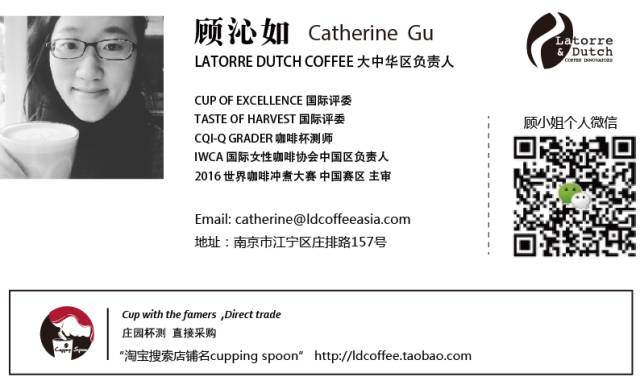
版权信息:以上文章内容转载自【cuppingspoon】,未经允许不得转载。翻译作者:顾沁如原文网址:http://www.worldbrewerscup.org/rules/侵权请联系:weixin@coffeesalon.com投稿合作:tips@coffeesalon.com


